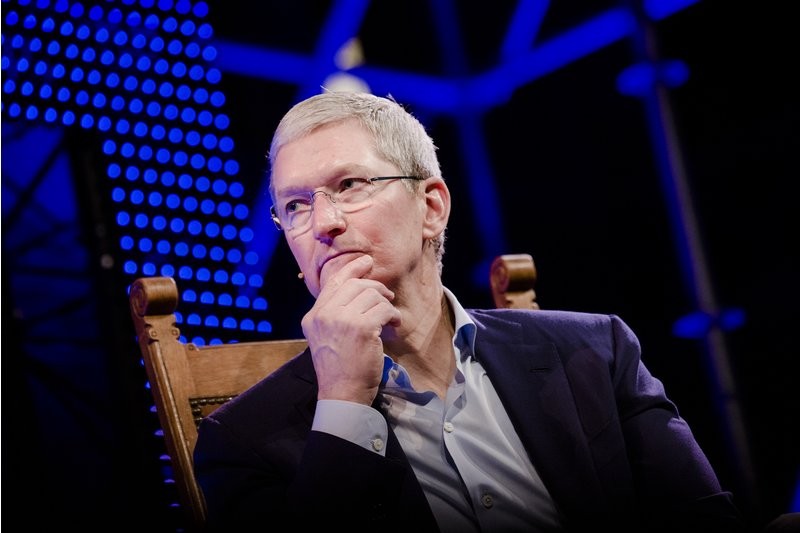美股暴跌,哪些公司最受傷?

|
2月6日下午,標普500指數(S&P 500)在引發混亂的暴跌之后強勢反彈,收盤時上漲了1.74%。周二的這波猛漲讓市場在拋盤浪潮中的整體跌幅從8.3%減少到了6.2%。然而,還有許多大型公司仍然在這次大出血中遭遇了調整級別的下跌。 我們將重點關注那些最大的企業,即標普500指數中市值最高的50支股票。盡管周二出現反彈,在這些一流公司中仍有10家公司的股票下跌超過10%——這也是“調整”級別的基準線。順帶一提,周二的暴漲也幫助美國市值最高的公司蘋果(Apple)脫離了10%跌幅的俱樂部。蘋果目前的跌幅是9.4%,不過因為公司的市值實在巨大,他們目前的縮水也是最嚴重的,減少了大約900億美元。 虧損榜前三名的跌幅都超過了12%,它們分別是富國銀行(Wells Fargo)、寶潔(Procter & Gamble)和雪佛龍(Chevron)。雪佛龍是上榜的三家能源公司之一。另外兩家是埃克森美孚(Exxon Mobil)和斯倫貝謝(Schlumberger)。雪佛龍可能比埃克森美孚的遭遇更慘,因為投資者對他們的期待更高。在拋盤浪潮之前,公司的市盈率是38,比埃克森美孚高出了10個點。至于斯倫貝謝,投資者之所以擔心這家全球油田設備供應商的股票表現,部分原因在于比起競爭對手,他們在高利潤的頁巖氣市場存在感不強,而該市場是近期銷售額增長的最強推動力。 富國銀行是唯一上榜的金融服務公司。公司股價出現了兩位數的下滑。就在2月2日的拋盤浪潮開始之前,美聯儲對富國銀行的未來發展做出了嚴重限制,對該銀行廣受討論的濫用銷售權力的行為處以了罰款。寶潔公司也是雪上加霜,在股市下行之前,公司令人失望的第四季度財報已經導致股票下跌了。 虧損榜上還有兩大科技巨頭英特爾(Intel)和德州儀器(Texas Instruments)。投資者對德州儀器有很高的期望,但是這個期望可能太高了。在拋盤大潮之前,該公司的市盈率是35(如今降低到了30)。相比之下,英特爾的市盈率原本大約是市場平均水平的25,如今已經降到了22。這是否意味著25的市盈率對于成熟的大型科技公司而言太高了呢?拋盤浪潮應該讓投資者重新仔細思考牛市的高估值了。 醫療巨頭有三家上榜,分別是默克(Merck)、強生(Johnson & Johnson)和艾伯維(AbbVie)。這三家公司的股價現在依然很貴,拋盤浪潮之前,默克和艾伯維的市盈率分別是60和40。在市場日益波動的時期,制藥公司尤其容易受到影響,因為高價購買這些股票的投資者估計要花很長一段時間來收回成本。高利率和動蕩市場的前景提高了貼現率,抑制了投資者長線投資的意愿。 值得強調,標普500指數里市值前50的公司中,有一些公司的表現遠超平均水平。其中勢頭最強勁的是Facebook和萬事達卡(Mastercard)。引人注目的是,亞馬遜(Amazon)在這波混亂中幾乎紋絲未動,市值減少不足1%。這三家公司都有極高的估值。盡管投資者對許多高估值公司的信心開始動搖,但他們證明了自己的金字招牌值得信賴。沒錯,這些公司的股價降低了,但只是在高額的基礎值之上降低了一點點。Facebook和亞馬遜展示的實力讓投資者仍然充滿樂觀。不過危險在于,市場呈現出的數據令人畏縮,人們的如意算盤恐將落空。2月初的股市表現可能預示著這樣的結果。(財富中文網) 譯者:嚴匡正? |
On February 6, the S&P 500 staged a strong rebound in a tumultuous session that careened from deep mid-afternoon losses to a strong, 1.74% gain at the closing bell. Tuesday’s surge cut the market’s overall losses from the big selloff from 8.3% to 6.2%. A number of big companies, however, are still nursing correction-sized declines from the bloodletting. We’ll focus on the biggest of the big, the 50 most valuable stocks in the S&P 500. In that top tier, ten companies have suffered declines of more than 10% despite Tuesday snapback—benchmark for a “correction.” By the way, Tuesday’s tide help lift America’s most valuable enterprise, Apple, out of negative 10% club. Apple has fallen 9.4% in the rout, but because its market cap is so gargantuan, it’s also suffered by far the largest loss of value, shedding around $90 billion. Heading the loser list are three players that all fell over 12%: Wells Fargo, Procter & Gamble, and Chevron . Chevron is one of the three energy companies on the roster. The others are Exxon Mobil and Schlumberger. Chervon may have suffered more than Exxon Mobil because investors were expecting more. Its pre-selloff PE of 38 was 10 points richer than Exxon’s. As for Schlumberger, investors appear jittery about the stock, in part because the world’s supplier of oilfield equipment has less exposure to the lucrative shale market––the biggest near-term driver for sales–– than competitors. Wells Fargo is the only one name from financial services to make the list. Its shares took a double hit. Just before the selloff began on February 2, the Fed imposed severe constraints on Well’s future growth, a penalty for its well-publicized sales abuses. P&G also took a pair of blows. It already sinking from a disappointing Q4 earnings report when the the downdraft struck. The losers list features two tech stalwarts, Intel and Texas Instruments. Investors were expecting big things, maybe too big, from TI. Before the selloff, it boasted a PE of 35 (now reduced to 30). By contrast, Intel was selling at around the average market multiple of 25, a level the rout lowered to 22. Does that mean that even a 25 PE is too high for a huge, mature tech titan? The selloff should prompt investors to carefully reconsider the bull market’s rich valuations. Three healthcare stalwarts made the cut, and Merck Johnson & Johnson, and AbbVie. All were, and remain, expensive, with Merck and AbbVie carrying pre-selloff PEs of 60 and 40 respectively. In periods of rising volatility, pharma companies are often especially vulnerable because of investors are paying big prices today for therapies expected to pay off over a long horizon. The prospect of higher rates and rocky markets raise the discount rate, curbing what investors are willing to pay for cash flows that stretch far into the future. It’s worth stressing that several members of the S&P’s top 50 have fared far better than average. Among the most resilient are Facebook[/f500link] and Mastercard[/f500link]. Remarkably, Amazon has barely budged through all the turmoil, shedding less than 1%. All three boast extremely rich valuations. But while investors’ faith in lots of high-flyers is wobbling, they’re convinced that these golden names deserve the tiniest of haircuts. Sure, prices are down. But they’re down only modestly from mountainous highs. And strength of a Facebook or Amazon demonstrate, investors are still brimming with optimism. The danger is that the daunting market math will demolish wishful thinking. The early days of February may foreshadow just such an outcome. |













